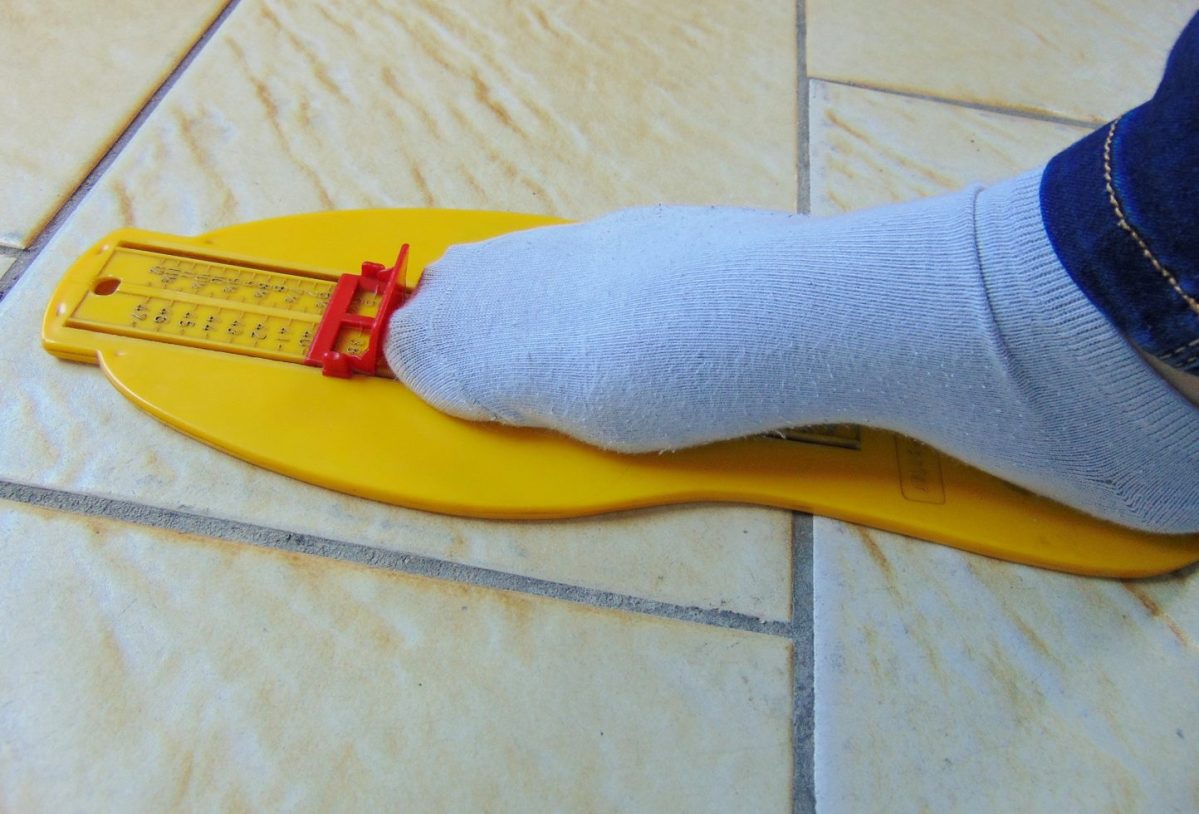In the world of footwear, finding the perfect fit is paramount. Whether it’s for comfort, style, or performance, understanding how to measure shoe size accurately is essential. This manual seeks to provide readers with a thorough rundown of the procedures involved in determining shoe size, enabling them to shop for shoes with knowledge.
Properly fitted shoes not only enhance foot health but also optimize overall comfort and prevent potential foot-related issues. To ensure an accurate measurement, this article will delve into the key aspects of measuring shoe size, including the significance of foot length and width. In order to start our quest to select the ideal pair of shoes, let’s explore the nuances of determining shoe size.
How To Measure Shoe Size?
This tutorial offers detailed instructions on how to measure your foot size correctly at home. Ensuring the correct measurements of both length and width is crucial, especially when purchasing shoes online, to avoid any disappointments.
Within this comprehensive guide, we demonstrate a simple method to measure your foot length using a piece of paper unless your foot exceeds 11 inches, in which case a larger cardboard box would be necessary. Additionally, you will require a pen and a ruler as the essential tools for this process.
Upon completing the measurements, it is advisable to utilize online resources such as Google to access conversion charts specific to your geographical location. These charts will enable you to correlate your measurements to the appropriate shoe size in your region.
Gather the necessary tools
Before measuring shoe size, it’s important to gather the following tools:
- A ruler or tape measure
- A piece of cardboard larger than your foot
- A pencil or pen
- Socks or any other footwear you would typically wear with the shoes being measured
Read more: What Does C Mean In Shoe Size in here
Note
To conduct the experiment, it is essential to gather the appropriate materials. A suitable choice for larger shoe sizes exceeding 11 inches would be a piece of cardboard, as it accommodates dimensions beyond the limitations of standard white paper. Alternatively, individuals with smaller foot sizes, particularly women or those with measurements below 11 inches, may opt for a regular piece of paper.
Moreover, it is crucial to ensure a stable surface for accurate results. Therefore, it is advisable to perform the experiment on firm, non-carpeted ground that provides adequate support for the foot. Now, let us proceed promptly to the experiment at hand.
Trace your foot
Standing on a firm, level surface, place the piece of paper there. For balance, make sure your weight is equally distributed between both feet. Using a pencil or pen, trace the outline of your foot onto the paper. Ensure that the pen or pencil is held perpendicular to the paper to achieve accurate measurements.
Measure the length
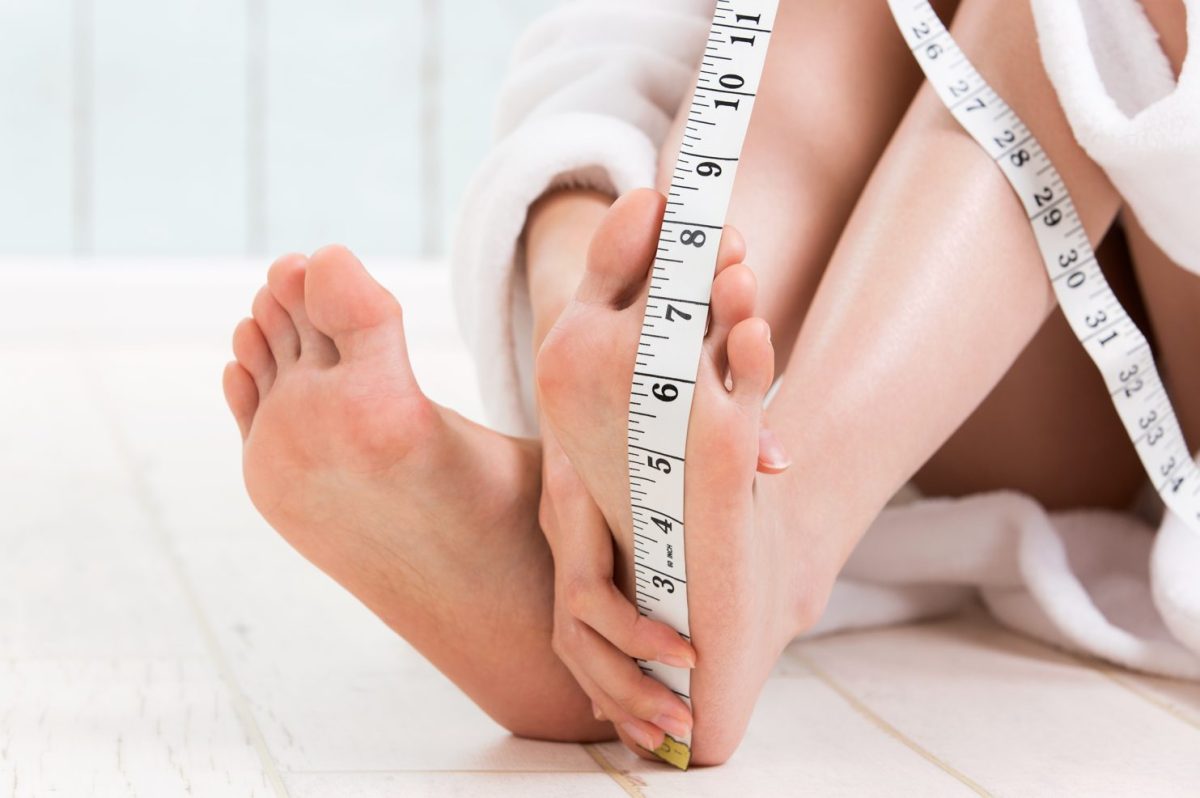
Measure the distance of your traced foot from the heel to the longest toe using the ruler or tape measure. This measurement represents the length of your foot. Repeat this process for the other foot as well, as foot sizes can vary between the two.
Measure the width
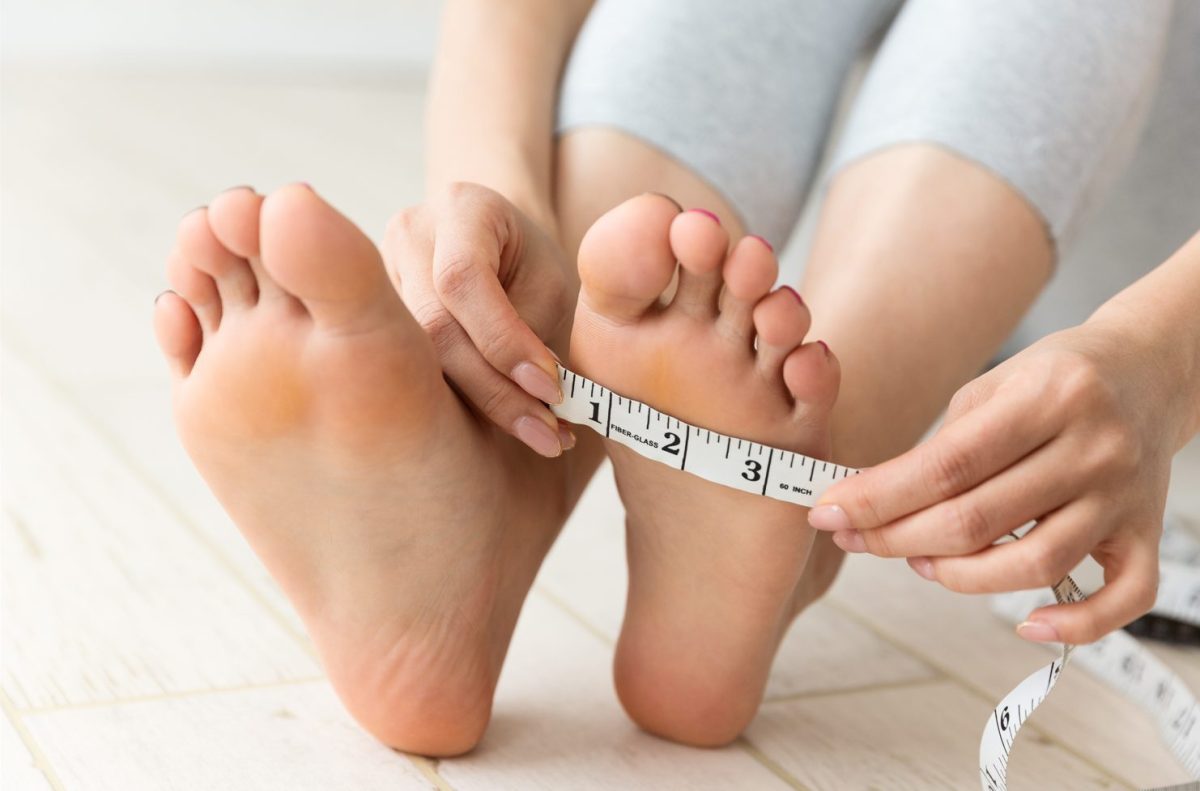
To determine the breadth of one’s foot, use a ruler or a tape measure to pinpoint the most expansive area of the foot within the indicated trace. Generally, this area is located near the ball of the foot. Subsequently, the distance between the two marked points on the traced outline should be measured. This particular measurement serves as an indicator of the foot’s width.
Convert measurements to shoe size
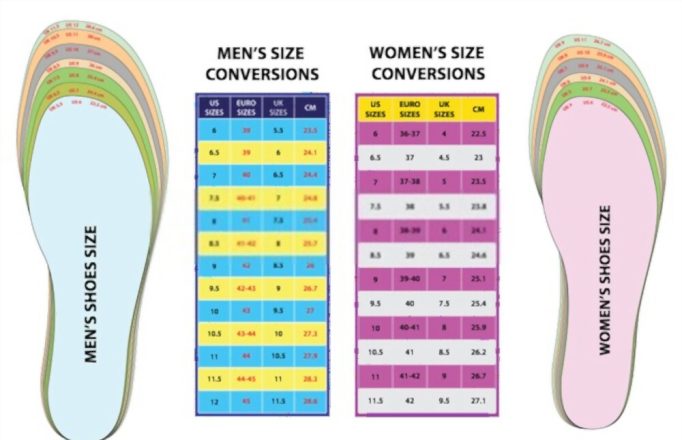
Refer to a shoe size chart once you’ve determined the length and breadth of both feet. These charts usually provide conversions between foot measurements and corresponding shoe sizes. Remember that shoe sizes might vary somewhat between brands and nations, so choose a dependable chart that corresponds to your region’s norms.
When considering footwear adjustments, it is recommended to augment the length of the big toe or the longest toe, either at the tip or along the side. This practice accounts for the fact that shoes can be comfortably filled out with inserts or thicker socks as needed, whereas reducing their size is not feasible.
Consider additional factors
A perfect fit requires more consideration than just your shoe size, which may be determined by measuring the length and breadth of your foot. Factors like arch height, foot volume, and specific shoe styles may influence the choice of shoe size. Trying on different shoe styles and brands is often necessary to find the best fit for individual comfort.
Conclusion
Accurate measurement of shoe size is crucial for selecting footwear that fits properly and provides comfort. By following the steps outlined in this analysis, individuals can obtain reliable measurements of their foot length and width. Remember to consult a shoe size chart and consider other factors for a more personalized fit. With proper measurement techniques, finding the right shoe becomes easier, leading to enhanced comfort and overall foot health.
Find more: How To Measure Shoe Width in this post
Tips to Achieving the Perfect Fit
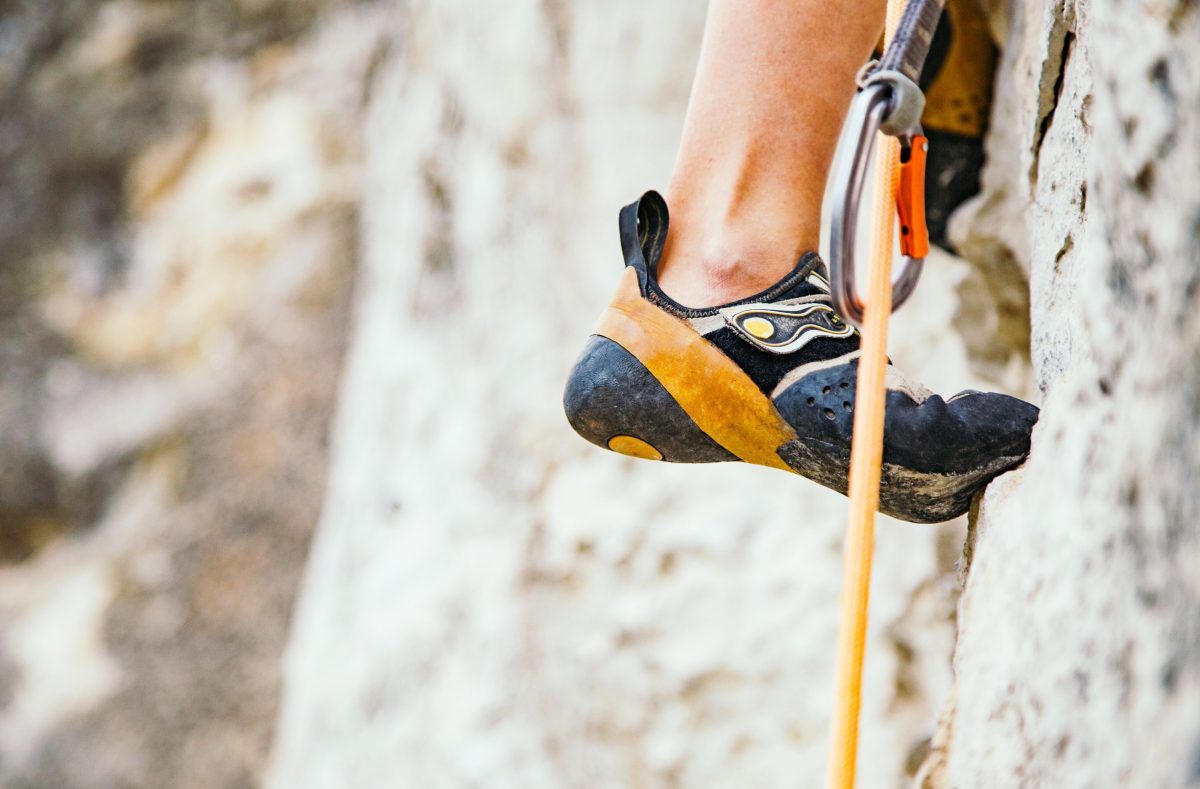
In the pursuit of both comfort and the promotion of foot health, the significance of a properly fitted shoe cannot be overstated. This comprehensive guide aims to provide invaluable recommendations and techniques to ensure an ideal fit for your shoes. By acquiring a thorough understanding of the nuances associated with appropriate shoe sizing and implementing the suggested strategies, you will unlock a realm of heightened comfort, reduced discomfort, and an overall enhanced walking experience.
Timing your fitting session appropriately is crucial
To ensure a shoe fits impeccably, it is essential to undergo the fitting process later in the day. Avoid morning fittings, as the average American shoe size tends to increase by half to full size as the day progresses.
Allow for extra room beyond your measured size
One common mistake individuals make when fitting shoes at home is neglecting to wear socks or the intended inserts. The recommended distance between your big toe and the front of the shoe is about the width of a finger. You should also keep your foot’s sides at about the same distance from the shoe. Accounting for these gaps is necessary due to the inclusion of socks, inserts, and potential swelling throughout the day, which can result in an increase of up to half a shoe size or a full shoe size.
Opting for a slightly larger shoe and compensating for the additional space with inserts, thicker socks, or padding is more convenient than having to return a smaller shoe. Therefore, going with a bigger fit is frequently a smart choice.
5 Warning Signs You’re Donning the Wrong Shoes
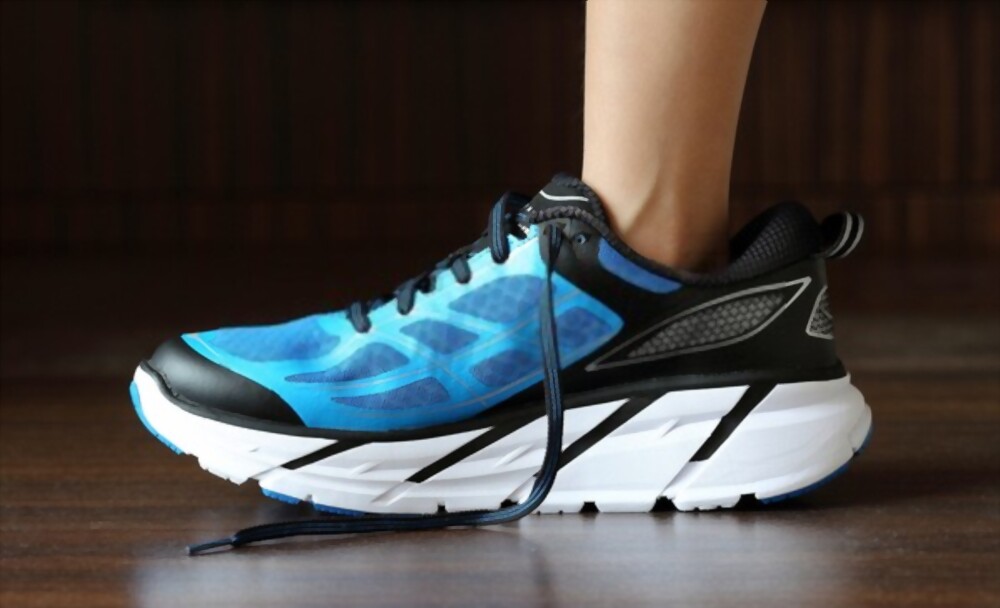
To preserve appropriate foot health, comfort, and general well-being, the right shoes must be worn. Wearing ill-fitting or inappropriate shoes can lead to various foot problems and discomfort. In this detailed analysis, we will explore five signs that indicate you may be wearing the wrong shoes. By understanding these signs, you can make informed decisions when selecting footwear and prioritize the health of your feet.
Pain and Discomfort
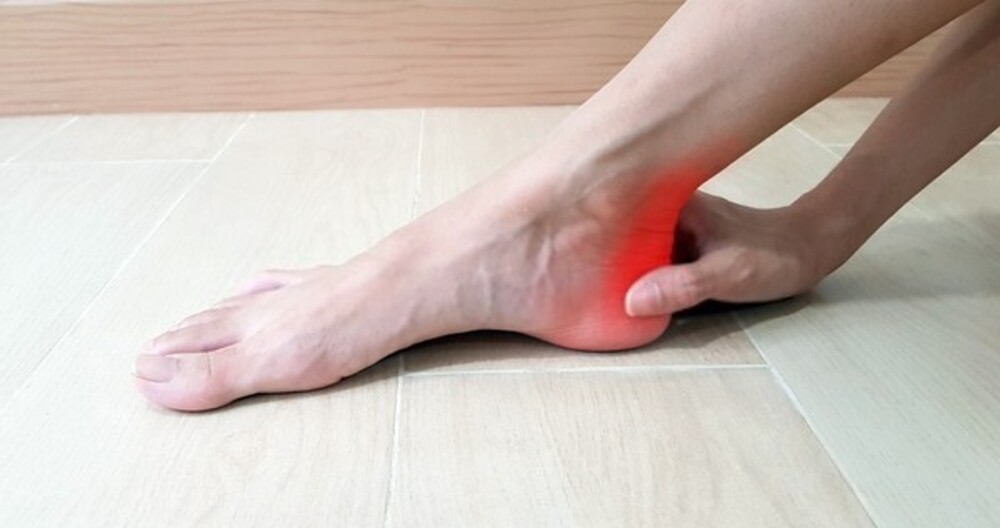
Being in pain or uncomfortable is one of the most evident symptoms that you are wearing the incorrect shoes. If your shoes cause discomfort or pain immediately upon wearing them or after extended periods, it could indicate poor shoe fit or inadequate support. Different types of pain, such as heel pain, arch pain, or general foot pain, can signify specific problems. For instance, a lack of cushioning or arch support can lead to heel pain or plantar fasciitis. It’s important to address any persistent discomfort to prevent further foot-related issues.
Blisters and Calluses
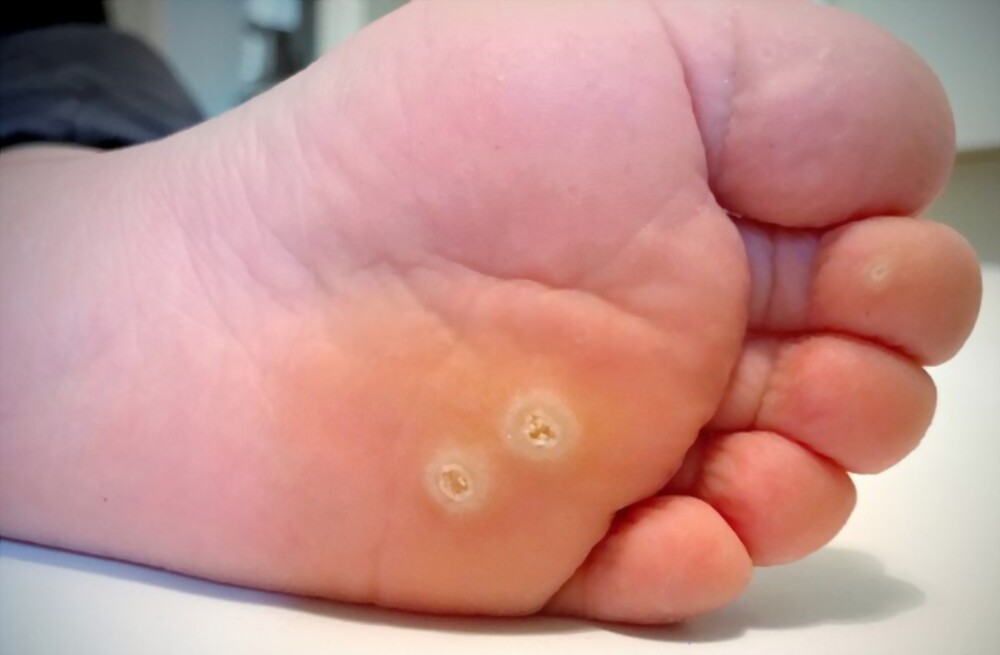
Calluses and blisters are typical indicators that your shoes don’t fit properly. Shoes that are overly tight or have rough seams frequently cause blisters because of the extra friction or pressure they cause. Calluses, on the other hand, develop as a result of prolonged pressure on specific areas of the foot. Ill-fitting shoes can cause rubbing and increased pressure, leading to the formation of painful blisters and calluses. Choosing shoes that match the shape and size of your feet can help prevent these issues.
Foot Deformities
Wearing shoes that are unsuitable for your foot type can contribute to the development or worsening of foot deformities. Conditions such as bunions, hammertoes, and ingrown toenails can be exacerbated by ill-fitting footwear. Narrow or pointed-toe shoes, for example, can squeeze the toes together, leading to deformities over time. It is essential to wear shoes that suit the structure of your foot and provide your toes plenty of flexibility to move properly.
Poor Balance and Stability
The choice of footwear can significantly impact an individual’s equilibrium and stability. Should one encounter challenges in maintaining proper balance during stationary or ambulatory tasks, it is possible that insufficient support or an ill-fitting shoe may be the underlying cause.
Footwear devoid of appropriate arch support or exhibiting signs of worn-out soles can contribute to imbalances and heighten the probability of accidents such as slips and falls. Hence, it is crucial to select shoes that offer ample stability, particularly for engagements demanding elevated levels of equilibrium and support.
Persistent Fatigue and Muscle Aches
When you wear shoes that don’t offer enough support or cushioning, your feet, legs, and even lower back may experience chronic weariness and muscular pains. Inadequate shock absorption can cause excessive impact on your joints and muscles, leading to discomfort and fatigue. The wrong shoes can also disrupt your natural walking pattern, straining your muscles and causing imbalances. Selecting shoes with proper cushioning, arch support, and shock absorption can help alleviate fatigue and reduce muscle aches.
FAQs
Can I use my regular ruler to measure my shoe size?
It is possible to employ a conventional ruler for the purpose of determining one’s shoe size. The ruler must, however, be long enough to precisely measure the distance between the tip of the longest toe and the heel, taking into account the whole length of the foot.
Should I wear socks when measuring my shoe size?
Yes, it is recommended to wear socks similar to the ones you would wear with the shoes you plan to buy. This ensures a more accurate measurement as different types of socks can affect the fit of a shoe.
How do I convert my foot measurement into a shoe size?
Different countries and shoe brands have different sizing systems. You can refer to a shoe size conversion chart to determine your corresponding shoe size based on your foot measurement.
Is foot length the only measurement used to determine shoe size?
Foot length is the primary measurement used to determine shoe size, but other factors, such as foot width and arch length, can also influence the fit. Some shoe brands offer different width options to accommodate various foot shapes.
Should I measure both feet to determine my shoe size?
Yes, it is recommended to measure both feet. In many cases, one foot is slightly larger than the other. Use the measurement of the larger foot to determine your shoe size for a better fit.
What if my foot measurement falls between two shoe sizes?
If your foot measurement falls between two shoe sizes, it is generally recommended to choose the larger size for a more comfortable fit. However, this can vary depending on the shoe brand and individual preferences.
Are shoe sizes consistent across all brands?
No, shoe sizes can vary between brands and even within the same brand’s varied designs. To achieve the greatest fit, it’s advisable to consult the size guide for that brand or put on some shoes.
Can I rely solely on my current shoe size for new purchases?
It is essential to take regular foot measurements because your foot size might alter over time as a result of things like weight gain, pregnancy, or age. Shoes that don’t fit properly might occur from relying only on your present shoe size.

